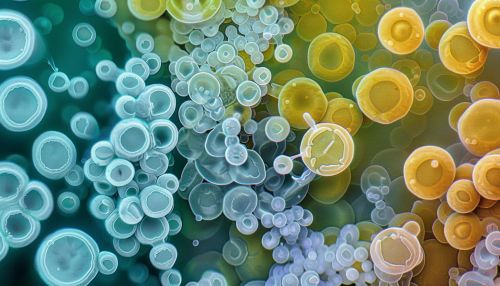Euryarchaeota
Overview
Euryarchaeota is a diverse phylum within the domain Archaea, which is one of the three primary domains of life. The other two domains are Bacteria and Eukarya. Euryarchaeota, like all Archaea, are prokaryotes, meaning they lack a nucleus and other membrane-bound organelles. However, they are distinct from Bacteria in several key ways, including their unique cell membrane chemistry and their ability to thrive in extreme environments.


Classification and Phylogeny
The classification of Euryarchaeota has evolved over time as our understanding of microbial diversity has improved. The phylum was first proposed in 1990 by Woese, Kandler, and Wheelis as part of a new domain of life, the Archaea. This classification was based on the analysis of ribosomal RNA sequences, which revealed that Archaea were a distinct lineage from Bacteria and Eukarya.
Within the Euryarchaeota, there are several classes and orders, including Methanogens, Halobacteria, Thermoplasmata, and others. These groups are defined by their unique metabolic capabilities and their adaptation to specific environmental conditions.
Morphology and Cell Structure
Euryarchaeota exhibit a wide range of morphologies, including rods, cocci, spirals, and even irregular shapes. They can be single-celled or form complex multicellular structures. Like all Archaea, Euryarchaeota have a unique cell membrane composed of ether-linked lipids, as opposed to the ester-linked lipids found in Bacteria and Eukarya. This difference in membrane chemistry is thought to contribute to the ability of many Euryarchaeota to survive in extreme conditions.
Metabolism
Euryarchaeota are known for their diverse metabolic strategies. Many are anaerobic and produce methane as a byproduct of their metabolism, earning them the name methanogens. Others are halophiles, meaning they thrive in high-salt environments, and use light to generate ATP in a process known as photophosphorylation. Thermophilic Euryarchaeota are adapted to high-temperature environments and use sulfur as an electron acceptor in their metabolism.
Ecology and Distribution
Euryarchaeota are found in a wide range of environments, including soils, oceans, and extreme environments such as hot springs, salt flats, and deep-sea hydrothermal vents. They play important roles in various biogeochemical cycles, including the carbon cycle, where methanogens contribute to the production of methane, a potent greenhouse gas.
Significance and Applications
Euryarchaeota have significant implications for our understanding of life on Earth and potential life on other planets. Their ability to thrive in extreme conditions suggests that life may be possible in similarly extreme environments elsewhere in the universe. In addition, their unique metabolic capabilities have potential applications in biotechnology, including biofuel production and bioremediation.
